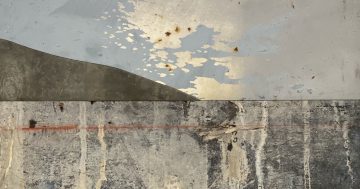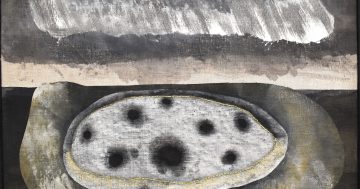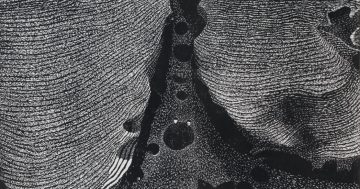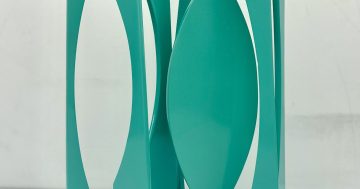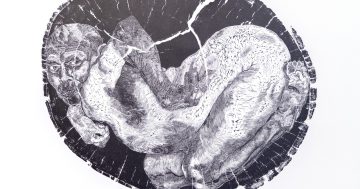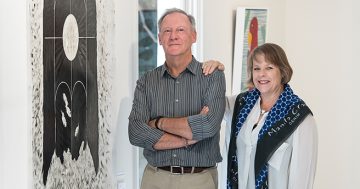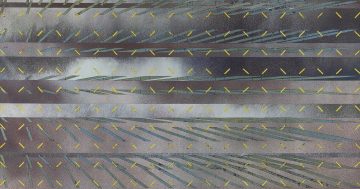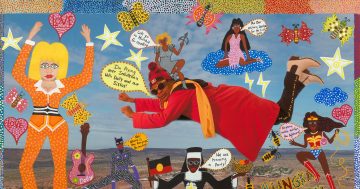
Møstings Hus – line etching, burnished aquatint, drypoint, relief roll and chine collé, edition of 12, 14.7 x 16cm. Photos: Beaver Galleries.
There’s been major change since Kirrily Hammond’s last exhibition at the Beaver Galleries in 2018.
Hammond’s previous exhibition explored an eerie reality in suburban Melbourne where, with the sinking of the sun, all sorts of phantoms could be imagined lurking on the streets.
This exhibition reflects Hammond’s new home in Copenhagen, Denmark, where the sun makes fewer appearances and a misty gloom prevails for much of the year. It is a bleak landscape that is the natural setting for the Nordic noir.
In the decade or so that I have observed Hammond’s work, she appears to be an artist drawn to the liminal space – something transitional where you are leaving the known and are about to embrace the unknown. Twilight is the time when nature is being reborn and that which was once familiar is veiled in a sense of mystery.
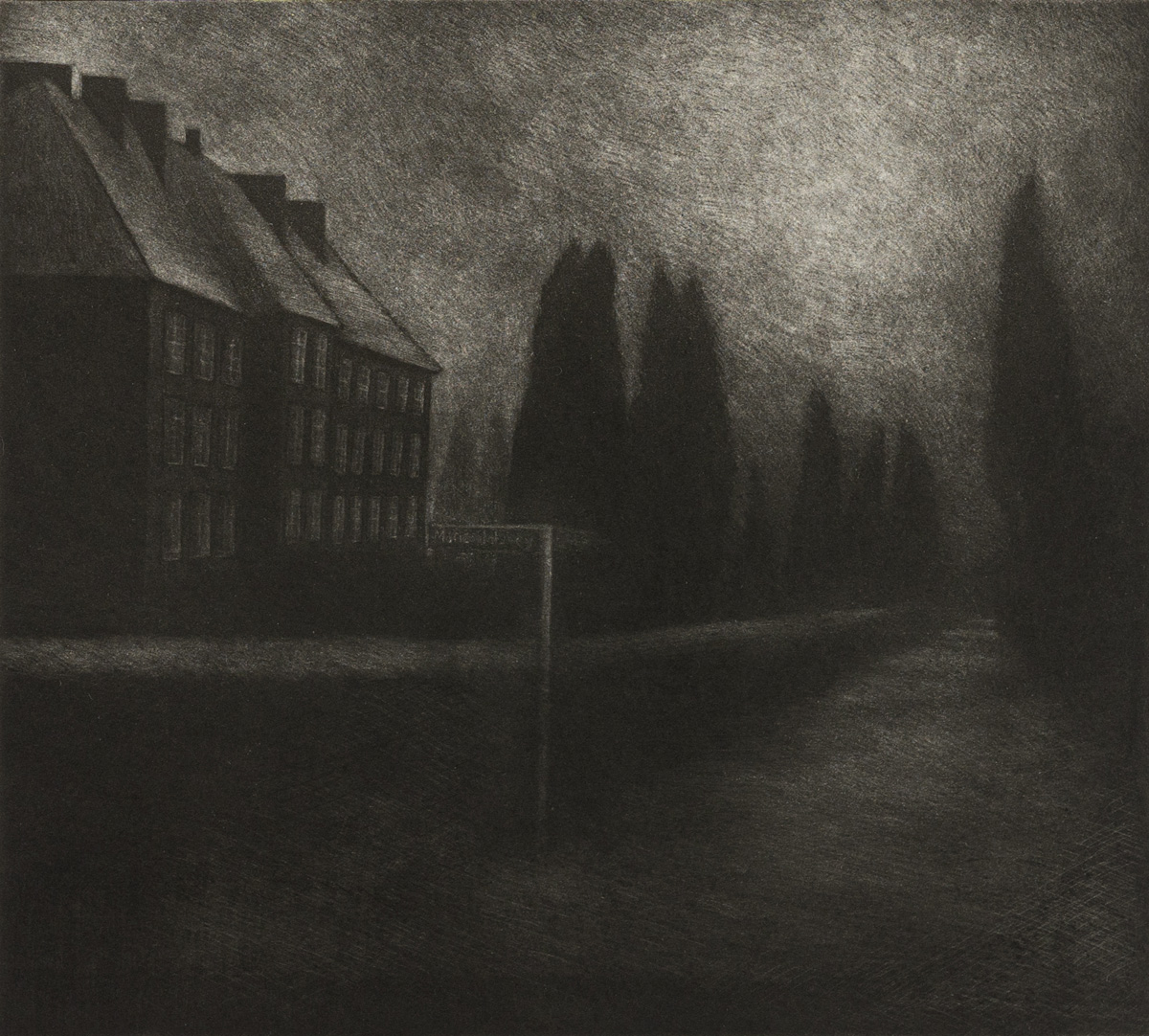
The school – burnished aquatint, edition of 8, 22.7 x 25.3cm.
The artist says of her new body of work: “The Danish seasons are also strikingly different; in the depth of winter, the sun often cannot be seen behind the clouds … Light becomes a fragile and precious thing … I often find inspiration in those moments of twilight when there is a soft, glowing light, accentuated by the shadows that merge in the landscape.”
Hammond’s exhibition presents a mixture of small oil paintings and prints, with the latter being the more resolved and accomplished and possibly reflecting her printmaking residency at Statens Værksteder for Kunst or the Danish Art Workshops.
A gem-like etching, Møstings Hus, is possibly the most successful image in the exhibition and captures a descending fog that veils buildings and the landscape but also conveys something of an inner luminosity. It is a cold, mysterious yet welcoming image, where a sanctuary exists behind a stone wall in all of this frozen bleakness.
Similarly, the dark aquatint, The school evokes all of the mysteries that the Norwegian playwright Henrik Ibsen would instil in his dramas, where for all of their realism, they also evoked something of the dark side of the urban landscape.
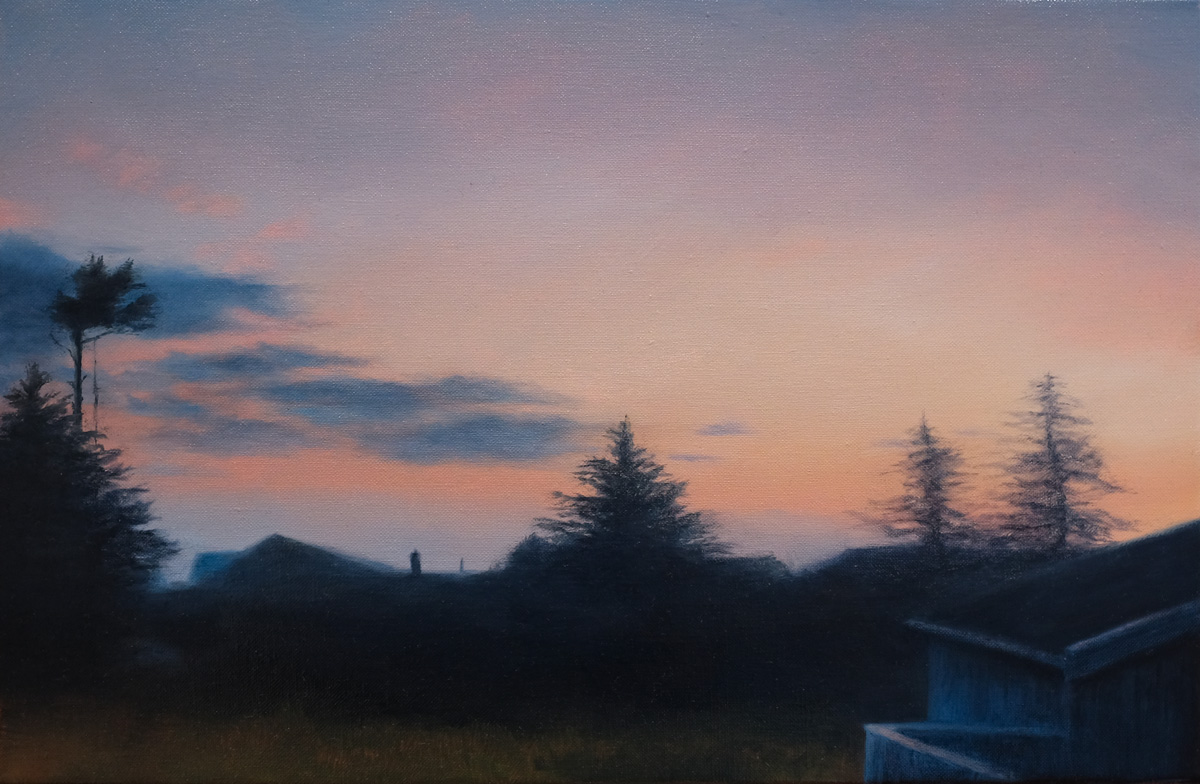
Pines – oil on linen, 30 x 46cm.
Hammond’s paintings, such as the beautifully evocative Pines, set at dusk, explore the silhouetted trees cast against the vast skies and the heavy clouds. It is a moody exhibition of exquisitely worked small-scale pieces.
If Hammond’s work breathes a Nordic darkness, the exhibition of the Yarrenyty Arltere Artists celebrates the radiating heat and the bleaching sun of Australia’s red centre. It is an art centre located at the Yarrenyty Arltere Town Camp in Alice Springs (Mparntwe) where, in contrast to the disturbing news concerning the epidemic of gang violence that we so constantly encounter, the ‘beautiful art room’ has given birth to a colourful array of wondrous creatures.
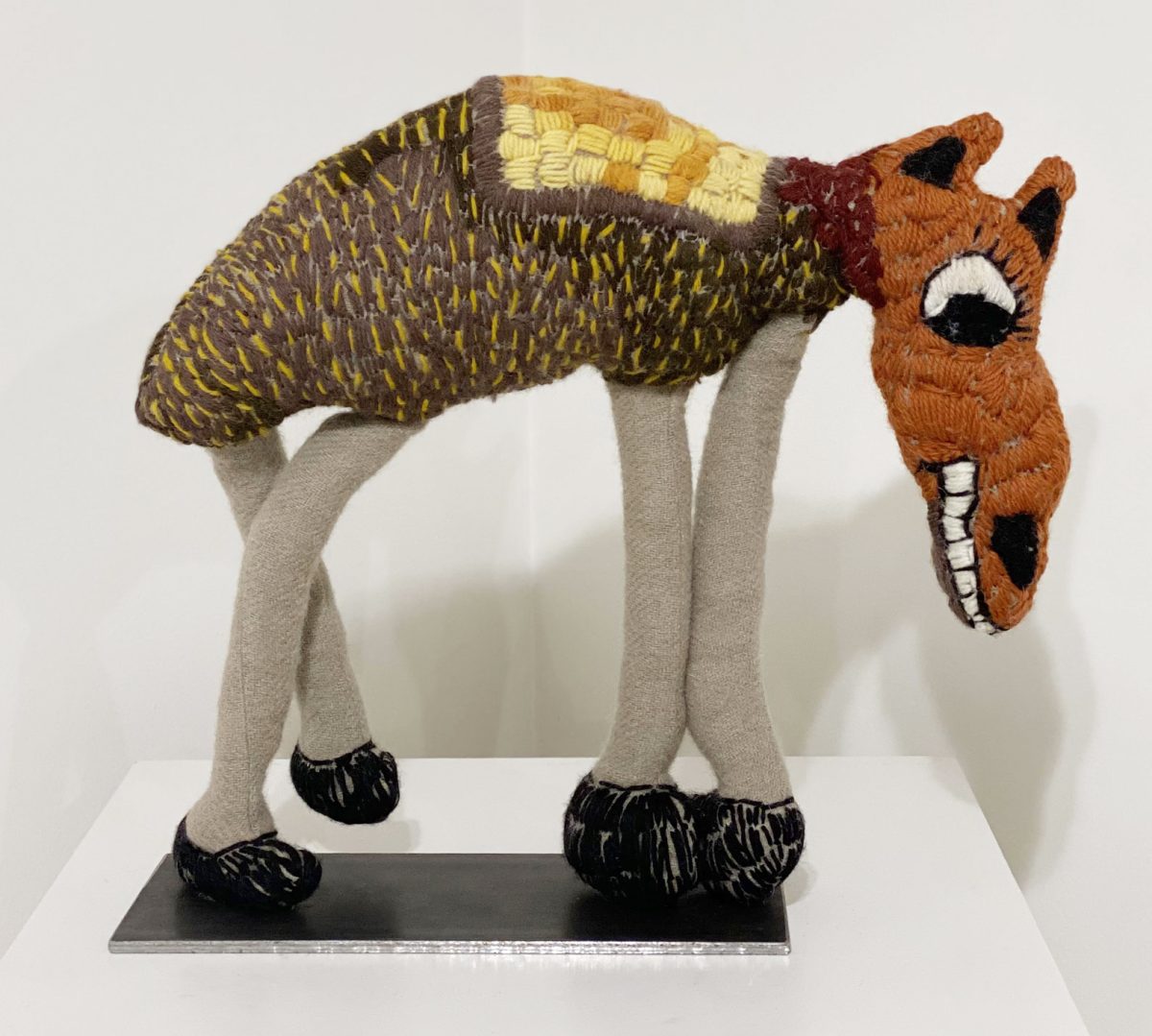
Yarrenyty Arltere Artists.- Rhonda Sharpe – Camela – recycled bush-dyed blanket, wool & cotton, 38 x 41 x 14cm.
The five women artists in this exhibition – Rhonda Sharpe (Luritja language), Louise Robertson (Walpiri language), Marlene Rubuntja (Arrernte and Western Arrarnta language), Roxanne Petrick (Alyawarre language), Beth Ebatarinja (Western Arrarnta language) and Rosabella Ryder (Arrernte language), have been involved in making soft sculptures out of improvised materials.
Rhonda Sharpe is possibly the most recognised name in the group and pieces such as her Camela and Pussycat – both made from recycled bush dyed blanket, wool and cotton – exude an inventive wit and a storytale charm.
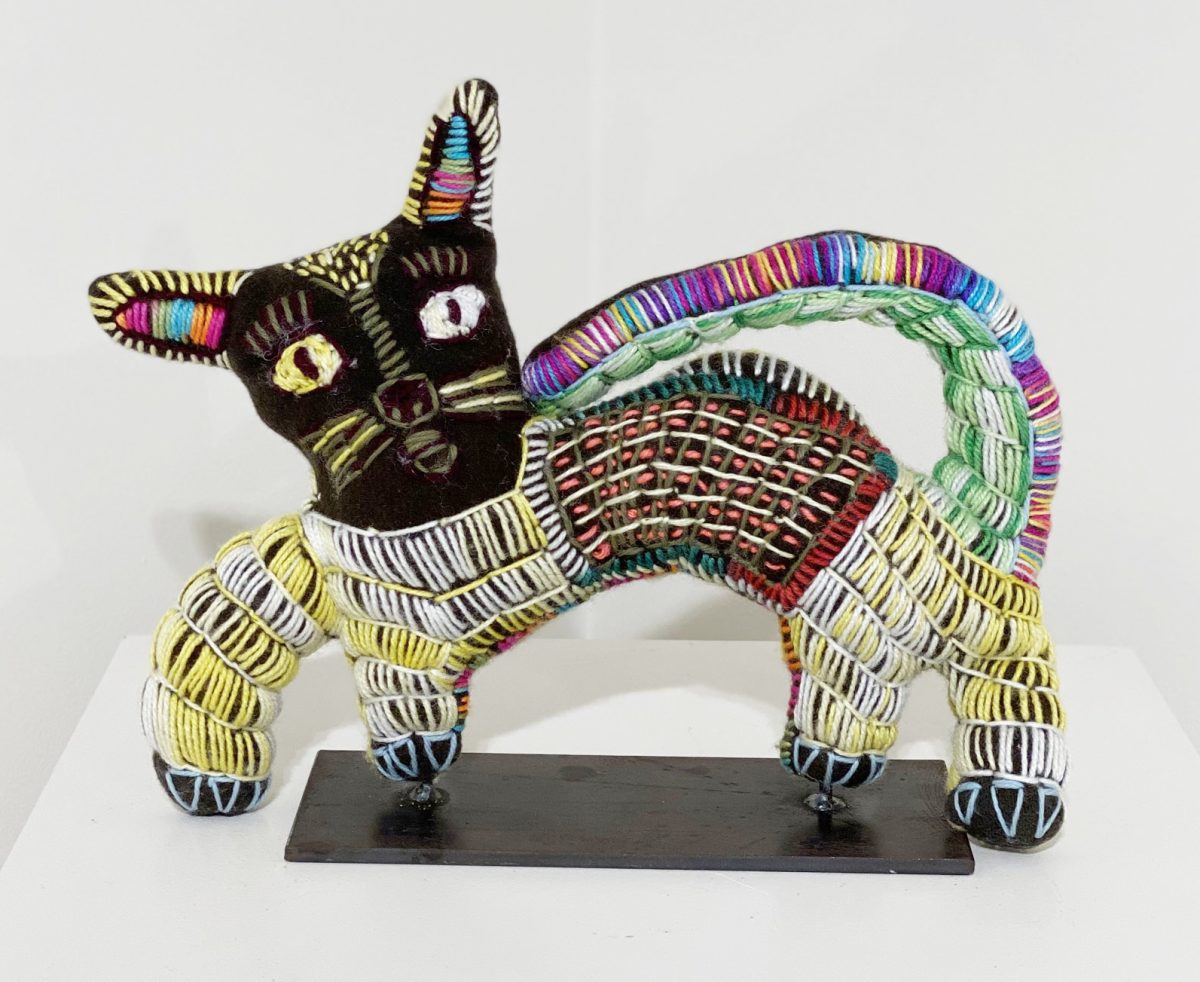
Yarrenyty Arltere Artists.- Rhonda Sharpe – Pussycat – recycled bush dyed blanket, wool & cotton, 28 x 37 x 12cm.
The artists comment on their work, “We love Our Beautiful Art Room. It is a strong place for us to make art, work out problems, show our kids a good future … Visit us in the Art Room and you will see us dying [sic] blankets with local bush plants, sewing sculptures with bright wool and cotton, laughing, telling stories. It is a good place, Our Beautiful Art Room, and we are sharing it with you through these soft sculptures that we make with our hands and with our hearts.”
Kirrily Hammond: Noctilucent and Yarrenyty Arltere Artists: Our Beautiful Room are exhibited at Beaver Galleries, 81 Denison Street, Deakin, from 2 May to 18 May.
Sasha Grishin is a critic and writer.
Original Article published by Sasha Grishin on Riotact.



